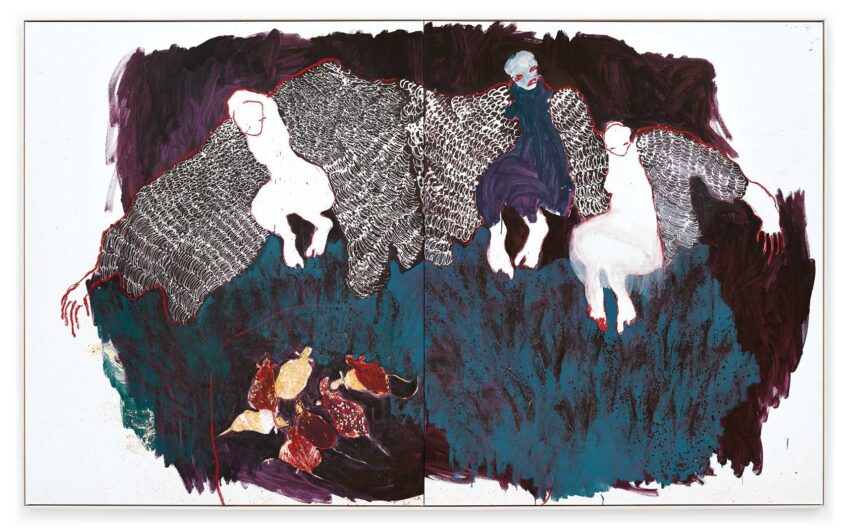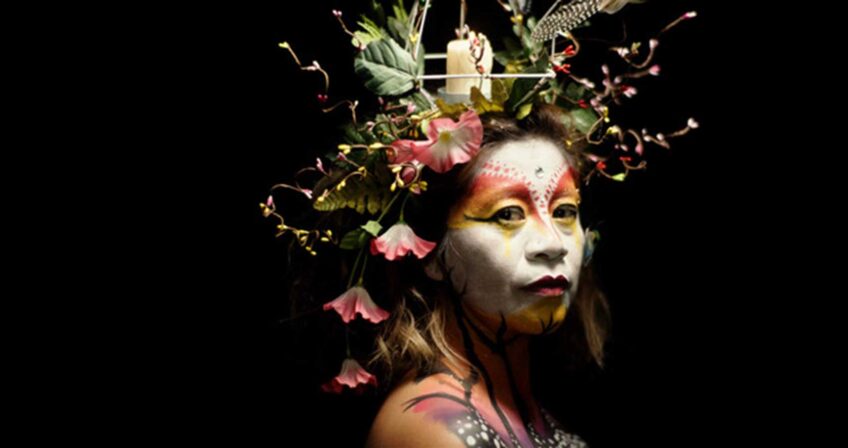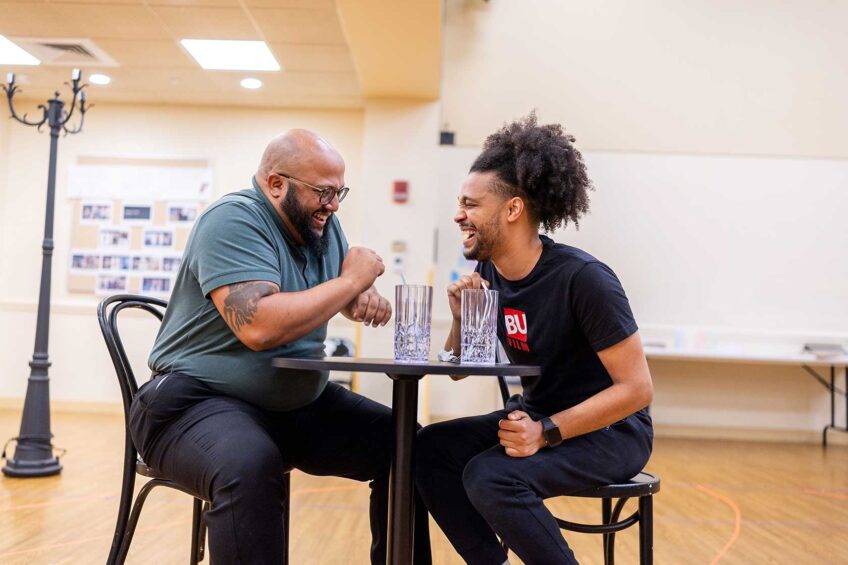Through the eyes of culture
Grand Circle Gallery mask exhibit reveals sophistication of tribal communities

Through September 30, Grand Circle Gallery in South Boston is showing “Through the Eyes of Culture — Masks from Around the World,” an in-depth exhibit feature masks, headdresses and traditions from five continents. Divided by location (Americas, Asia and Oceania, Africa and the Middle East, etc.), the exhibit features a range of contemporary and ancient headwear.

Author: Photo: Celina ColbyAn African mask.
Vintage travel posters, video and other artifacts provide historical context to the inventory of over 40 masks. Beyond displaying intricate pieces of traditional dress, “Through the Eyes of Culture” provides integral insight into the people, and the cultures, behind the masks.
Many of the masks on view are part of elaborate costumes used for cultural rituals. The Saqra (devil) mask from Paucartambo, Peru is both a portrayal of an evil spirit and a satire of the ruthless European colonizers who took over the native South American land. The mask has a large, frizzy mane of blonde hair, framing a blotchy green and black face, red eyes and a snake-like tongue. Large horns crown the ensemble. The result is a comic and simultaneously terrifying poke at the strange invaders who radically, and detrimentally, altered the native Peruvian way of life.
Grand Circle Gallery is run by Alan and Harriet Lewis, chair and vice-chair of the Grand Circle Corporation, a global travel company. The couple has long harbored passion for both travel and the arts, and opened the gallery as a way to bring the cultural boon of travel to the Boston audience at home. The Lewis’s most notable interest is their collection of vintage travel posters, several of which are highlighted in this exhibit. The masks were collected from Grand Circle offices around the world, and many of the African masks are on loan and for sale from Hamill Gallery of Tribal Art in Roxbury.
What keeps the exhibit engaging is the inclusion of other related objects, such as shadow puppets or headwear that was created for similar entertainment and religious purposes. The Europe section includes a Henna wedding veil from Turkey. Traditionally, the bright red veil and matching cap are worn for a wedding ceremony during which the woman sheds her identity as part of her mother’s household and prepares for a new life in her husband’s home. In a similar symbolic vein, animal masks from Panama were made with woven palm fibers to represent both the tribe and the animal’s commitment to nature.
In the Africa and Middle East room, a Makande body mask mimics the shape of a young pregnant woman. Men would wear the mask over their chests and stomachs to experience and take on the burdens of pregnancy and birth. This ancient sharing of gender roles is interesting and gratifying from the lens of a world still fighting for equality of the sexes.
“Through the Eyes of Culture” provides a unique window into the traditions and priorities of indigenous groups around the globe. Seeing complex practices like the satire of European invaders in the Peruvian mask and the sharing of gender responsibilities in the Makande mask breaks down the stereotype that tribal communities are less sophisticated than others. The exhibit offers a satisfying opportunity to see the world through the eyes, and often the beaks, of these intricate art inventions.







